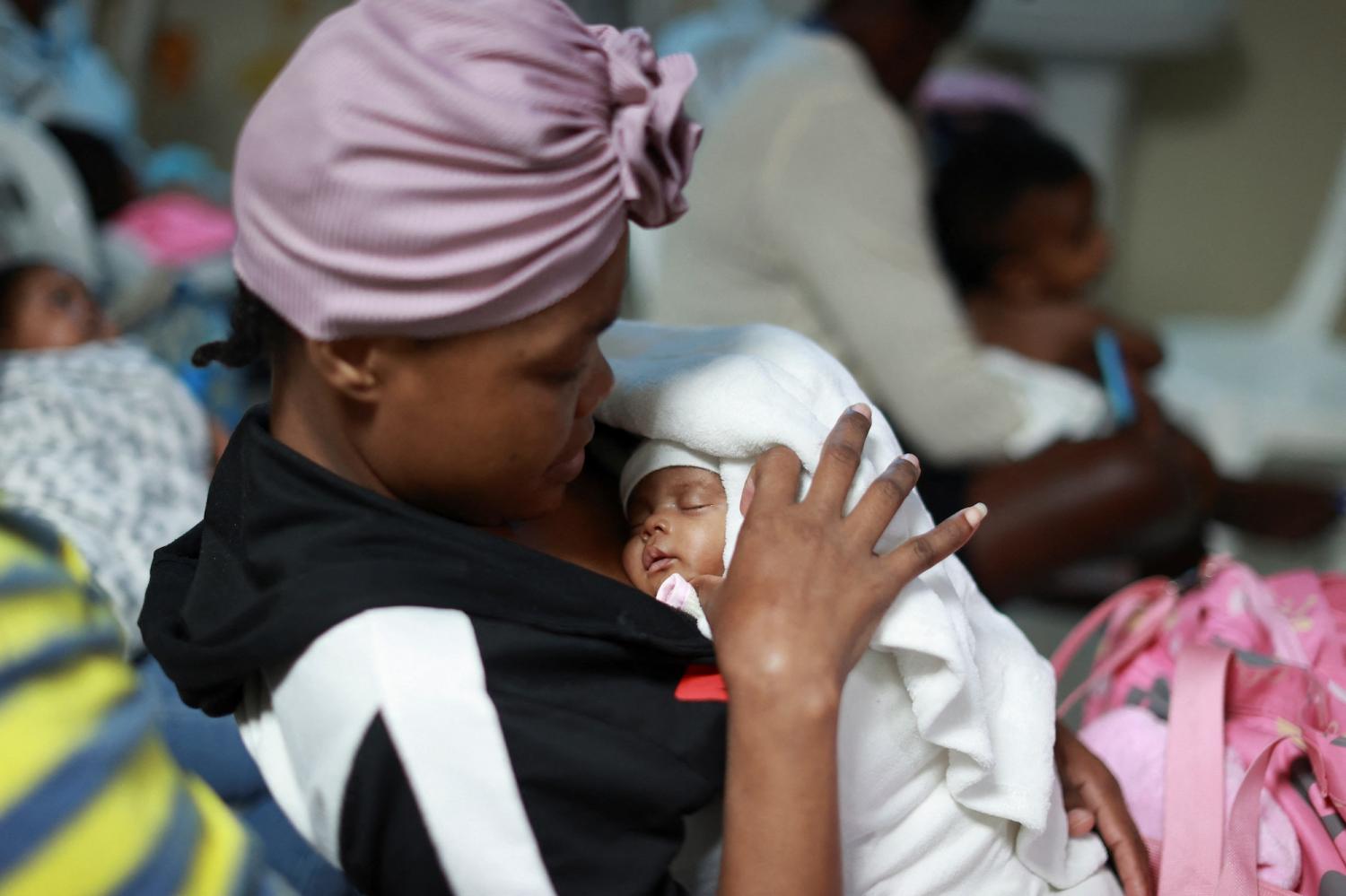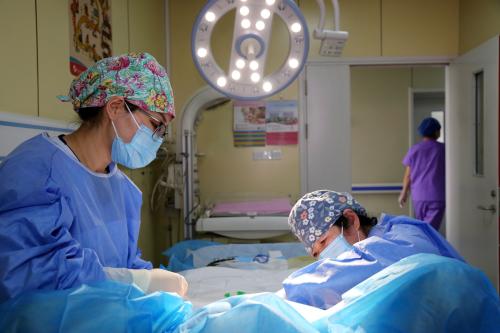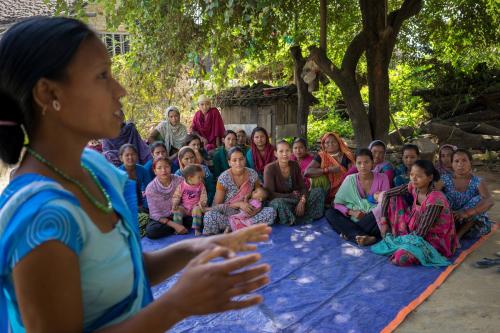Problem
Preventing maternal mortality remains a persistent global challenge. Sustainable Development Goal (SDG) target 3.1 commits countries to collectively reduce their maternal mortality rate (MMR) to a global average of less than 70 per 100,000 live births by 2030. At the current pace, the world is projected to fall far short of this target, resulting in more than one million lives at risk of preventable deaths. The African Region accounted for 69% of global maternal deaths in 2020, with deaths concentrated in countries such as Nigeria (estimated MMR of over 1000 per 100,000 live births in 2020). The U.S. has the highest MMR among advanced economies (22.3/100,000 in 2022), with stark racial disparities (e.g., Black women: 49.5 /100,000). As of 2024, approximately 287,000 women die annually from pregnancy-related causes worldwide.
Maternal deaths have profound ripple effects on families and communities. The loss of a mother can be devastating, particularly for her children, who rely on her care and support. She may also serve as a caregiver for elderly relatives or play a critical economic role, such as farming or trading, to sustain her household. Research consistently underscores the critical role mothers play in their children’s survival and development: Children with surviving mothers are more likely to live past the age of ten and to stay in school longer.
Progress combatting global maternal mortality
In recent decades, activists, practitioners, and policymakers have made remarkable progress in combating maternal mortality in many countries, including Ethiopia, India, Sierra Leone, and Tanzania. Through a suite of interventions, India reduced its MMR by 73% over two decades, from 384/100,000 live births in 2000 to 103/100,000 live births in 2020. Tanzania has achieved an estimated 80% reduction in MMR since 2015, reaching 104/100,000 live births as of 2022. However, to achieve SDG3.1, there is a need for a concerted effort to ensure countries and communities everywhere can replicate and expand this rate of performance.
Notwithstanding the progress made, ending preventable maternal deaths is surprisingly difficult. Maternal mortality arises from various causes at different stages of pregnancy and childbirth, including unsafe abortion, hemorrhage, sepsis, eclampsia, and obstructed labor. These complications can occur suddenly and require timely, appropriate interventions. In addition, research has detailed a range of socioeconomic, cultural, and health-care infrastructure factors that influence women’s ability to seek, access, and receive timely, respectful, and appropriate care.
Accordingly, reducing maternal deaths requires comprehensive approaches that address a continuum of care and agency for women. Recent simulation-based research, for example, suggests that individual interventions (e.g., increasing facility births or improving clinical services) could yield modest reductions in maternal mortality globally, whereas country-level strategies that combine facility-based care, community-based interventions, and health system strengthening are likely to be significantly more effective.
Comprehensive strategies require a comprehensive set of ingredients. In addition to long-term commitment to addressing social determinants and resources, these strategies require stable, locally rooted collaboration within the health sector (e.g., between community-based and facility-based practitioners) and between the health sector and other key sectors (e.g., between health and transport systems to support care accessibility) to improve quality of care while addressing equity disparities.
Impact hubs for zero maternal deaths by 2030
Against this backdrop, leading maternal health practitioners and experts at the forefront of redesigning global institutions gathered in Room 17—a working group linked to SDG 17 for revitalizing partnerships—within the 17 Rooms initiative. Room members explored how an “impact hub” approach could help transform global maternal health outcomes by 2030. We began by recognizing that no one approach can ever address the full complexity of the problem and that the idea of an “impact hub” builds on efforts that already exist. Still, we concluded that the time is right for pulling together many current efforts within this framework.
An impact hub is an organization that connects governmental and non-governmental actors to pursue a singular, measurable mission, with a focus on scaling up effective solutions, rather than starting from scratch. An impact hub is a time-bound institution, intended to solve a specific problem and then close or transition into something else. It is meant to complement, not replace, existing efforts and institutions; indeed, it can pull them together.
In the case of maternal health, several regional and global organizations, including the Partnership for Maternal, Newborn & Child Health (PMNCH), Merck/MSD for Mothers,1 AlignMNH, development finance institutions, including Global Financing Facility (GFF), and the World Bank, and several U.N. agencies including UNICEF, the World Health Organization, and the United Nations Population Fund (UNFPA) already perform some impact hub functions.
To help coordinate these existing efforts, the working group proposes the creation of impact hubs focused on the goal of zero maternal deaths by 2030.
Adopting the shared goal of zero deaths, instead of SDG 3.1’s global average MMR of 70 per 100,000 live births, underscores the dignity of every individual life. The WHO has estimated that 90% of maternal deaths are preventable with timely access to evidence-based care. Additionally, a focus on zero deaths prioritizes equity by addressing extreme disparities masked by global or national averages—such as higher mortality rates in Sub-Saharan Africa and among Black women in the U.S. Further, zero deaths can be operationalized through community-level metrics and audits and thereby help draw closer attention to the continuum of care required to transform maternal mortality outcomes. Finally, Room 17 participants agreed that the ambitious goal of zero deaths could help galvanize political will for reforms essential for sustained progress beyond 2030.
In principle, an impact hub could be formed by any community, anywhere. A minimal criterion for an impact hub might be a partnership between three or more organizations or initiatives from different sectors already working on reducing maternal deaths (or improving maternal health outcomes) in a specific community or context. Tied to a singular goal of zero maternal deaths, funding would enable impact hubs to pursue strategies and interventions that are appropriate for the community that the hub serves.
The larger vision for a worldwide effort would be a network of impact hubs across local, regional, national, and international levels, unified by their commitment to achieving zero maternal deaths by 2030 (and by their willingness to use the same measurement criteria, described below). A network of impact hubs could be activated initially through a combination of a global-scale impact hub (e.g., a partnership between three or more global actors including GFF, PMNCH, and AlignMNH, and international donors) and several local impact hubs (e.g., by identifying two or three community-level impact hubs in country contexts like Ethiopia, Nigeria, Sierra Leone, or Tanzania). Many existing national networks created to reduce maternal mortality could transform one of their existing hubs into an impact hub by bringing in additional partners; the point of an impact hub is to connect what exists more effectively rather than to create anew.
Three impact hub design principles
1. A singular metric of success
All impact hubs would be unified by a commitment to the goal of zero maternal deaths by 2030. To operationalize progress toward this goal at the community level, Room participants identified the need to develop a community-level metric that is robust (from a measurement perspective), impactful (meaning people care), “impact-able” (meaning actors believe that acting on this metric will make a difference), and feasible in any community or health system context.
One possible metric is “community death-free days.” Instead of focusing on the number of deaths in the pursuit of zero deaths, this approach emphasizes life, with clinicians and families celebrating a healthy birth for baby and mom. Room members and country-level practitioners consulted on the proposed metric generally agreed that a singular, positively-framed metric like community death-free days could help motivate maternal health practitioners, reframe mothers’ often negative perceptions around accessing formal care, galvanize political support (e.g., of national governments), and attract support from donors and funders globally.
2. Many impact hubs, many solutions
Local context matters for maternal health. Solutions to reduce maternal deaths will depend on intersecting factors such as a community’s political and economic fragility, the readiness and resilience of its health system, the suitability and availability of interventions, and the specific needs of mothers. For example, digital cash transfers might make sense for reducing barriers to delivery in economically fragile contexts, while training programs targeting early detection of high-risk pregnancies might be best deployed within suitably resilient health systems. Impact hubs for zero maternal deaths would aim to support and incentivize the adoption of a range of solutions that reinforce synergies between supply- and demand-side drivers of reduction in maternal deaths in different contexts. By emphasizing partnerships, particularly at the local level, impact hubs can incentivize the type of sustained, multi-sector coordination required to successfully implement comprehensive solutions.
3. Autonomy and connective tissue
The overall success of impact hubs for zero maternal deaths will likely hinge on impact hubs enjoying a combination of autonomy (to flexibly pursue context-calibrated strategies), connectivity with other impact hubs (to leverage network and learning effects resulting from knowledge-sharing across impact hubs), and adequate resourcing (to enable action). As the central coordinator of funding and capacity support, a global impact hub would need to foster appropriate knowledge sharing and learning across a global network of impact hubs on a foundation of local impact hub autonomy.
In this way, a global impact hub could provide the connective tissue necessary to identify and elevate innovative approaches that occur across local contexts, like the success of the Early Detection and Management of Postpartum Hemorrhage (E-MOTIVE) protocol in northern Nigeria, Ethiopia’s “No woman should die while giving life” community engagement campaign, and “zero-cost delivery strategies,” such as the Janani (Maternal) Express or Janani Suraksha Yojana programs in India, designed to address mothers’ financial barriers to accessing care. This would make it easier for countries to develop strategies calibrated to local conditions and maintain the global connectivity required for sharing knowledge, resources, and goals. Having a central point for cross-fertilization can speed the dissemination of best practices, enabling experienced practitioners and those with lessons to share and engage with those looking to learn in the field.
An initial global impact hub could provide capacity and training support for select tools and interventions that reinforce synergies between supply- and demand-side drivers of maternal health outcomes. For example, targeted digital cash transfers to reduce mothers’ financial barriers to delivery can be coupled with strategies to increase the quality of health system services, including capacity for early detection of high-risk pregnancies, education programs, and post-natal care.
Open considerations
- Financing models. There is a need to articulate how an impact hub would support results-based financing without recreating existing structures.
- The role of emerging technologies. For example, digital cash transfers are an evidence-based, cost-effective intervention for putting money directly in the hands of mothers to reduce cost barriers to delivery. This technology raises many questions, including which community contexts are best suited for such interventions and how to prioritize them for assessments and programming considerations, as well as how to sustainably integrate the intervention into existing health system infrastructure—such as insurance schemes—to ensure mother agency and avoid the risk of creating “parallel systems.”
- Managing spillover effects. By their design, impact hubs for zero maternal deaths by 2030 seek to incentivize bottom-up innovation and investment in new approaches and solutions. A global hub will need to consider how these incentives might influence dynamics such as uneven mobility of healthcare workers, i.e., potential “brain drain” created by wealthier or more innovative communities attracting midwifery workforce from poorer contexts.
- Local leadership. Locally driven efforts for zero maternal deaths are even more important in the context of growing challenges to global cooperation for development outcomes. A global impact hub will need to grapple with how to sustain global support for distributed, local leadership on maternal health interventions.
Practical next steps and recommended action
- Stakeholder and asset mapping. A stakeholder mapping exercise would help test core assumptions and identify how the proposed network of impact hubs for zero maternal deaths would complement existing efforts of global and local actors to address maternal health.
- Recruit first movers. Following stakeholder mapping, an immediate first step could be identifying three suitable partners for an initial global hub and two or three country partners for local impact hubs (e.g., in Sierra Leone, Ethiopia, or Tanzania).
-
Acknowledgements and disclosures
This memo was produced by members of Room 17, a working group linked to Sustainable Development Goal 17 on Partnerships for the Goals, convened as part of the 17 Rooms global flagship in 2024. 17 Rooms is a platform for advancing the economic, social, and environmental priorities embedded in the world’s 17 Sustainable Development Goals. The initiative is co-hosted by the Center for Sustainable Development at the Brookings Institution and The Rockefeller Foundation. In 2024, each Room was asked to develop and advance a big idea—a practical action or mechanism that could make a material difference to some aspect of the world’s 17 SDG outcomes by 2030.
The Brookings Institution is a nonprofit organization based in Washington, D.C. Our mission is to conduct in-depth, nonpartisan research to improve policy and governance at local, national, and global levels. The conclusions and recommendations of any Brookings publication are solely those of its author(s), and do not reflect the views or policies of the Institution, its management, its other scholars, or the funders mentioned above.
-
Footnotes
- Ann-Marie Etiebet, one of the co-leads for Room 17, previously led Merck for Mothers.
The Brookings Institution is committed to quality, independence, and impact.
We are supported by a diverse array of funders. In line with our values and policies, each Brookings publication represents the sole views of its author(s).









